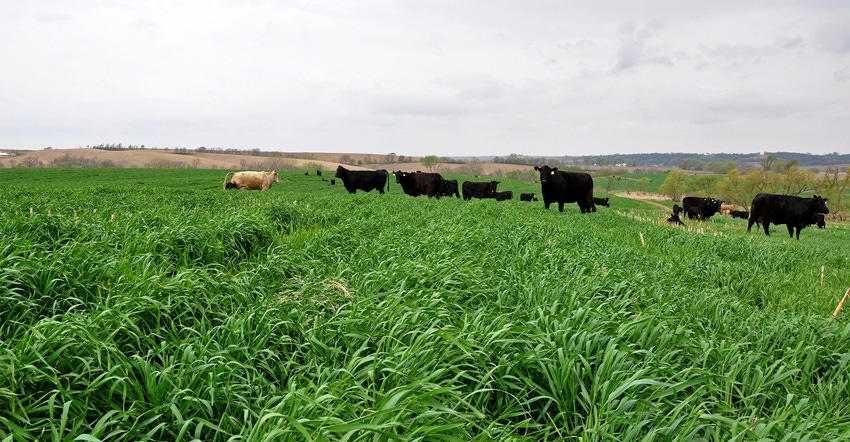March 11, 2019

Accusations against the beef industry, including Iowa’s 28,000 beef producers, have recently been in the news again as part of the Green New Deal proposal and an EAT-Lancet Commission report. However, research shows that eliminating meat consumption would have only a minor impact on the environment.
“Removing all livestock and poultry from the U.S. food system would only reduce global greenhouse gas emissions by less than one-half of 1%,” says Matt Deppe, CEO of the Iowa Cattlemen's Association,
Concerns about livestock and greenhouse gases generally reflect a worldwide view of livestock production. “Because of advances in animal health, animal welfare, genetics and nutrition in the U.S., our beef has one of the lowest carbon footprints in the world, 10 to 50 times lower than some nations, according to the U.S. Environmental Protection Agency,” he notes. EPA reports that GHG emissions from cattle only account for 2% of U.S. GHG emissions.
Cattle help protect environment
The concerns also fail to take into account the incredible advances made by U.S. farmers and ranchers. Beef Checkoff research shows since 1977, today’s beef farmers and ranchers produce the same amount of beef with 33% fewer cattle.
In Iowa, cattle are able to maximize land use and utilize resources that might otherwise go to waste. Cattle in Iowa often graze hillsides not suitable for row crops. They also consume grain grown by Iowa’s farmers, and make use of crop residue, ethanol coproducts and cover crops as feed. Cattle then return the nutrients back to the land via manure. It’s a continuous cycle of growth and regeneration.
Corn-fed cattle from Iowa are part of the solution, not the problem, Deppe says. Compared to beef from other parts of the world, like Brazil or Australia, which often comes from grass-fed cattle, grain-fed cattle have up to a 67.5% lower carbon footprint. This is due to heavier carcass weights, a shorter time spent on feed, and a higher-energy, lower-forage diet.
“Despite the myths about the beef industry, Iowans can proudly enjoy beef, knowing that its impact on greenhouse gas emissions is low and continues to decrease,” he says.
For more information about beef’s impact on the environment, check out: Beef It’s What’s for Dinner and Beef Research.
ICA represents nearly 10,000 beef-producing families and associated companies dedicated to the future of Iowa’s beef industry. ICA’s mission is “Grow Iowa’s beef business through advocacy, leadership and education.”
Source: ICA, which is responsible for the information provided and is wholly owned by the source. Informa Business Media and its subsidiaries aren’t responsible for any of the content contained in this information asset.
You May Also Like




